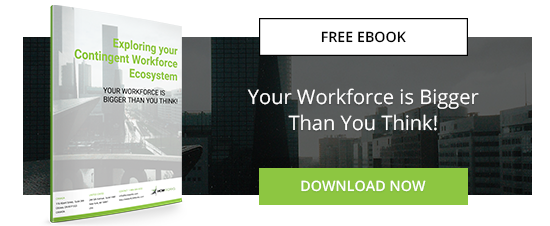The contingent workforce is a global staffing trend that’s becoming increasingly popular among business owners. Using contingent workers can provide added flexibility and cut your labour costs significantly. When you hire on a per-project basis, there’s no need to pay a salary, benefits, sick days and vacation days, or overtime. It isn’t necessary to withhold taxes, Canada Pension Plan contributions, or Employment Insurance premiums or pay your portion of these deductions. As such, payroll, benefits administration, and HR costs are reduced as well.
However, using a contingent workforce comes with its own risks—specifically, tax liabilities. Your company must identify and properly classify the independent contractors, freelancers, consultants, and other outsourced and non-permanent workers that you hire or face the consequences.
Employee/continent worker classification isn’t an arbitrary choice. Just because you’re the employer does not mean you can choose any terms and conditions that you want. The Canada Revenue Agency has very specific rules about how employees and independent contractors need to be classified and it is cracking down on misclassification. Whether you’re misclassifying contingent workers due to ignorance or willful disobedience in order to save time and money, beware that the CRA will more than likely find out, and make you pay for the error.
Here are some of the reasons why proper classification is vital.
Consequences for Your Employees
Your employees are entitled to certain employment benefits, such as employment insurance, health and dental, and life insurance. They also have certain rights under the Employment Standards Act. If you are misclassifying employees as contingent workers even though they are technically employees under the law, you are preventing them access to the rights and benefits that they are rightly entitled to. This cannot only cause problems for your employees, but it can also lead to your company getting a bad reputation in the industry. If you’re not compensating your staff fairly or using honest business practices, others in the industry will see your company in a negative light.
Your Bottom Line Is at Risk
Employee misclassification can be devastating to your bottom line. If the CRA senses something is afoot, your company will be subjected to an audit and if you’ve been caught misclassifying contingent workers, you’re going to be hit with severe fines and penalties. You’ll have to pay the taxes and withholdings that you owe, plus interest, plus penalties. Depending on how long you’ve been noncompliant for and with how many workers, these costs could run in the millions—these penalties could sink your business.
However, it isn’t cost effective to classify everyone that works for you as employees to avoid these penalties, either. Some of these workers will in fact be independent contractors. And you can save a lot of money on salaries and benefits by understanding how to classify them.
Civil Lawsuits
Another reason it’s so important to classify your contingent workforce is to avoid the possibility of facing civil lawsuits. Contingent workers might sue you for denial of benefits, stock options, and other types of employee compensation if they feel as though they have been misclassified. You could end up paying thousands, if not millions, of dollars in settlement money.
Protect Your Company
Using a contingent workforce can be highly advantageous to your company. However, you must mitigate the risks associated with this business decision. You must protect your company from tax liabilities and the associated fines and penalties as well as civil lawsuits while providing your employees with the benefits and compensation that they rightly deserve. If you do not have a worker classification strategy in place at your business, you could benefit from a workplace management solution that will help you properly classify your contingent workers and ensure that you stay compliant with tax regulations.



